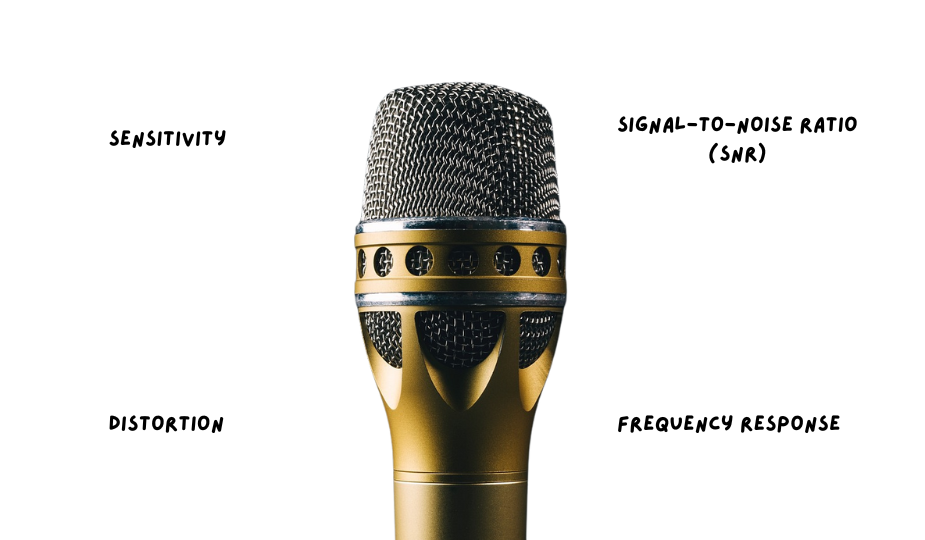Microphones are the most common audio devices, and selecting the right one can be complex for non-professionals due to various parameters. If we need to choose a microphone without fully understanding the product, how should we proceed? Generally, evaluating a microphone involves looking at the following key parameters:

Sensitivity
Microphone sensitivity has its own measurement standards and relatively complex formulas, which we won’t delve into here. However, it’s essential to remember these points about sensitivity:
- Microphone sensitivity is represented as a negative number.
- A larger negative number indicates lower sensitivity.
- Higher sensitivity means a larger output signal and louder sound.
Does higher sensitivity always mean better sound? Yes, but not entirely. Higher sensitivity also means more noise is captured, so we need another parameter—Signal-to-Noise Ratio (SNR)—to assess microphone quality.
Signal-to-Noise Ratio (SNR)
SNR can be simply understood as the comparison between the signal and noise. Although it has a complex calculation formula, we won’t discuss that in detail. Just remember these key points:
- SNR is expressed in dB.
- A higher SNR indicates stronger noise reduction capability.
- Generally, an SNR over 60 dB is considered excellent for a microphone.
- Is a higher SNR always better? Yes, but not entirely. Stronger noise reduction can lead to more masked noise, which may distort the sound. Therefore, fidelity is also an important consideration.
Distortion
We typically refer to distortion as total harmonic distortion (THD), which compares the effective signal output to the total output signal. Simply put, it’s the comparison between the sound heard and the sound captured by the microphone. Distortion also has a complex formula, but here are the essential points:
- Lower distortion indicates better fidelity.
- Distortion below 0.5% is generally considered good.
- Fidelity is influenced not only by noise reduction but also by frequency response. While there are specific data points for fidelity, it remains a relatively subjective concept since everyone’s perception of sound differs.
Frequency Response
Microphone frequency response refers to how a microphone responds to different frequencies, specifically its sensitivity to sound frequencies. It outlines the range of sounds the microphone can capture. In simpler terms, the frequency response range indicates what sounds it can pick up. Typically, humans can hear frequencies between 20 Hz and 20 kHz, so most microphones also have this range. However, due to various electronic components, the accuracy of frequency response can vary. A good microphone should at least cover a range of 32 Hz to 18 kHz. Additionally, microphones include parameters such as directionality, including omnidirectional, cardioid, supercardioid, unidirectional, or bidirectional patterns.


